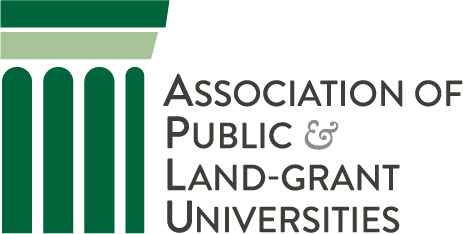As colleges and universities strive to remove barriers to equity for minoritized and poverty-affected students, it’s essential to understand the ways in which assessment can contribute to those barriers.
That was the subject of Assessing Students with Care, the second in a series of Disciplinary Communities of Practice webinars offered in November and December 2021 by the Online Learning Consortium, the Association of Public & Land-grant Universities, and Achieving the Dream, in partnership with Every Learner Everywhere.
The Communities of Practice initiative brings together faculty and instructional staff in writing, math, biology, and chemistry to collaborate with like-minded peers across institutions. They identify, share, and develop discipline-specific teaching and learning strategies, with a focus on effective and equitable digital learning and teaching with technology.
Megan Tesene, Director of the Personalized Learning Consortium at APLU, said during the Assessing Students with Care webinar that the COVID-19 pandemic has created a new normal where “the impetus was on us to be more caring and compassionate, especially during this crisis — which frankly we should be considering always, not just in a global pandemic. Folks have been learning how to engage students a little bit differently in ways that don’t necessarily look like the traditional model and continue those practices or grow them moving forward.”
Every Learner Everywhere and the network partners include many of these new strategies in the Caring for Students Playbook, which provides instructors with guidance for centering student care in their teaching. The playbook also includes resources on the topic of the first webinar in the series, reimagining and equitizing course syllabi.
Presenters and participants in the Assessing Students with Care webinar offered several principles for equity-centered academic evaluation.
1. Align assessment needs and care
Nicole Weber, Associate Vice President of Learning at OLC, said that as college and university instructors design their courses, “Centering care in our assessments really starts with student needs and their lived experiences — where they are and also where they want to go. This is incredibly important as we support them in their personal growth and in their trajectory toward their career and contributions to the world as educated citizens.”
For instance, Weber added, “high-stakes proctored exams cause students a lot of anxiety, and, while there are discipline-specific instances where it’s necessary for students to take proctored exams, like when preparing for certifications, it’s also worthwhile to consider providing students with different ways of demonstrating their learning.”
Related reading: 3 Steps for Centering Student Care in Assessments
2. Incorporate a variety of assessment types
Varying assessment types fosters equity by being inclusive of the different ways students prefer to learn “and acknowledging the strengths they have in demonstrating their learning,” Weber said.
“This creates a wonderful space for us to really lean into a multi-pronged assessment approach that incorporates traditional methods, like conventional exams,and mixes them more with authentic methods.”
Some alternative assessment methods include:
- Peer review
- Self-assessment
- Experiment
- Problem-based learning
- Discussion boards
- Role play
- Online journaling
Related reading: Can Technology Enable Authentic Assessment at Scale in Higher Education?
3. Be transparent with assessments
It’s crucial to make clear to students how they can prepare for the assessment, what they can expect when they engage with the assessment, and what the criteria for success are.
“We can be really transparent in our expectations by sharing them with students in places like announcements, assignment sheets, and overviews,” Weber said. “What will be covered? What should they consider as they work on a paper? What is the exam going to look like?”
She cited recent research showing that students who received more transparency reported gains in areas that are important predictors of student success — academic confidence, a sense of belonging, and mastery of skills that employers value most when hiring. The research also found that these benefits were especially significant for minoritized, poverty-affected, and first-generation students.
4. Incorporating high-quality feedback
Tesene recommends the mnemonic FIDeLity as a reminder to use the characteristics of actionable feedback:
- Frequent: Give feedback daily, weekly, or as often as possible.
- Immediate: Get feedback from students as soon as possible.
- Discriminating: Make clear what the difference is between poor, acceptable, and exceptional work.
- Loving: Be empathetic in the way you deliver your feedback.
“It’s important to provide students with feedback that is both helpful and humanizing,” said Tesene. Making sure the feedback comes quickly, and at regular intervals, she noted, prevents loss of momentum during the course and helps ensure students know where they stand. “Being discriminating lets students know what good work actually looks like, so they know what they’re aiming for.”
As important as all the other characteristics, she said, is that feedback be loving: “Our students are human. Bad feedback can make them feel a little discouraged and actually influence how they move forward. So, really, just try to be caring and understand who students are, and what their lived experiences are, in providing that feedback.”





